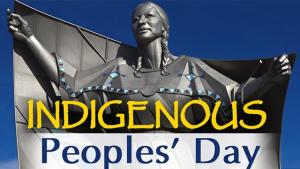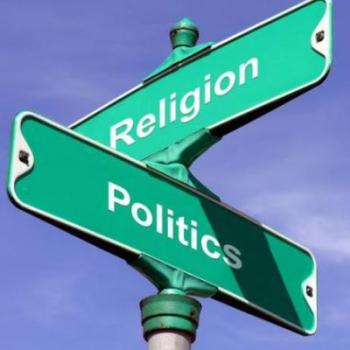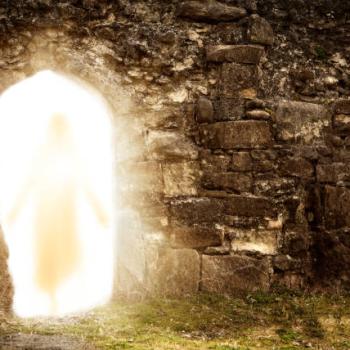
It’s October 12, the day an Italian explorer made landfall in what would become the Americas. It’s also a good day to commend the citizens of Mankato, Minnesota. Mankato’s City Council last June voted to name the second Monday in October Indigenous Peoples Day instead of Columbus Day. “Nearly 50 people broke out in applause,” the Mankato Free Press reported.
Mankato, a medium-size city in Southeastern part of the state, joins other Minnesota cities, including Minneapolis, St. Paul, Red Wing, and two Harbors. Nationally, Los Angeles, Seattle, Denver, Cleveland, and Phoenix are among cities that changed Columbus Day to Indigenous Peoples Day.
The Free Press states:
Council President Mike Laven, who made the motion to officially recognize the day in Mankato, said Monday’s action is only a piece of a decades-long effort that must continue.
The new holiday for Mankato was especially significant because the city had a part in one of darker episodes in the relations between native tribes and white occupiers. On December 26, 1862, 38 Dakota men were hanged in the aftermath of a six-week war. It was the largest mass execution in United States history. The hanging scaffold was “about 500 feet from the City Council chambers,” according to the Free Press. President Abraham Lincoln’s intervention reduced the number hanged to only (?) 38.
Indian War of 1862
The 1862 Dakota uprising was the largest of the Indian wars. It included massive attacks on a fort and a city, twice for each. For Indian wars that was very unusual.
A thorough account of the war and its causes appears on the website “Exploring Off the Beaten Path.” The article “1862 Dakota War” opines:
For over 100 years, the people of Minnesota celebrated the Dakota War as a victory of pure good over pure evil, i.e., the settlers defeating the treacherous blood thirsty savages. It was called the Sioux Massacre. That view has changed in recent years, especially with the commemoration of the 150th anniversary of the conflict in 2012. As it turns out, there was enough blame and blood to go around for everyone.
The violence of the attackers – farms burned, 500 killed, mostly civilians, including women and children – was over-matched by whites’ deceit and corruption before the war.
The lead-up to war
“Off the Beaten Path” gives several examples of provocative white behavior that precipitated the war:
- Dakota tribes had sold 30 million acres to the United States for 10 cents an acre, or $3 million. Of this amount almost half a million went immediately to traders, agents, and politicians. Ostensibly it was for “debts in arrears, resettlement costs and expenses.” Recipients of this “pork” included Henry Hastings Sibley and Alexander Ramsey, famous names in Minnesota history. Respectively, they are the state’s first and second governors. Ramsey was governor during the war.
- The tribe was to receive annual annuities from the remaining $2.5 million. Two “Sioux Agencies,” Upper and Lower on the Minnesota River, set up Warehouses of food, seed, and other necessities. The Dakota could purchase from them with the annuities. These annual payments were “sporadic at best and habitually late.” When the money showed up, often merchants, bureaucrats, and politicians had their hands in it first.
- “Goods were often shoddy and food unfit to eat. Merchants and traders charged exorbitant rates of interest for credit purchases. When government payments didn’t show up, they repossessed the plows, tools and firearms they had sold on credit. Then they filed for payment of ‘debts in arrears’ against the annuity. “It was a corrupt, incestuous system and it had been like that since the first day of the first treaty.”
- On the eve of the war the Dakota were starving due to the previous year’s crop failure and a brutal winter. No annuity payment was coming. Warehouses were full of food, but agents refused to distribute any on credit.
“Let them eat grass.”
The same article includes these details about the progress of the war:
- The head of the Lower Sioux Agency, Andrew Jackson Myrick, was an ill-tempered alcoholic married to a Dakota woman. After listening to Dakota pleas for help, he is supposed to have said, “Let them eat grass.” He was one of the first government casualties of the war. His killers stuffed his mouth with grass.
- The war lasted from August 18 to September 26. The Dakota were habitually long on council and in this instance short on execution. Their style did not include coordinated attack. That plus the determination and skill of the ill-prepared whites and some lucky torrential rains contributed to the Dakotas’ defeat.
- Little Crow, a reluctant warrior, had said in council that for every white killed, 10 more will pop up. He knew from the start that the cause was hopeless. Eventually desperation led him to “take back their homeland by force or die trying.”
An immigrant from Bohemia with my wife’s mother’s maiden name, Pelzl, died in the attack on the young city of New Ulm. Another of my wife’s relatives lived on a farm outside New Ulm. The family would share food with Indians in need. Bands of Dakota, pillaging and burning on their way to New Ulm, bypassed that farmstead.
Less than unanimous agreement in Mankato on Indigenous Peoples Day
The Free Press article noted that there was some controversy in the Mankato City Council chambers. The original Indigenous Peoples Day resolution proposed at the Council meeting in June included the following clause:
Whereas, starting in 1492, Christopher Columbus and his men committed untold atrocities against Indigenous Peoples and thus began the exploitation and dispossession of Indigenous Peoples, whose lands were taken for the formation of the United States, of which Mankato, Minnesota is a part.
During the debate proponents of the resolution removed this clause.
Still the city’s Mayor, Eric Anderson, wouldn’t support the Indigenous Peoples Day resolution because it specifically mentioned Columbus Day. “I’m not here to support, condemn or condone…,” Anderson said. “Human beings make mistakes.” Dennis Dieken, a Council member, also objected to replacing Columbus Day. He wanted Indigenous Peoples Day on a different date.
Another Council member, Mark Frost, said Mankatoans may still remember the Italian explorer:
It you want to talk about Columbus, talk about him… If you want to talk about Indigenous Peoples, we live with them. We don’t live with Columbus anymore.
Image credit: LEX18.com via Google Images












